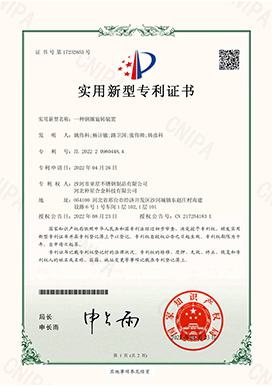- Phone:+86-17331948172 +86-0319-8862898
- E-mail: inquiry@puxingclamp.com
సెప్టెం . 11, 2024 14:13 Back to list
Premium 1 Inch Hose Clamps - Durable & Reliable Hose Solutions
The Importance of 1-Inch Hose Clamps and Their Manufacturing Process
Hose clamps, while often overlooked, play a crucial role in various industrial and domestic applications. At the heart of these essential components is the 1-inch hose clamp, a fixture that ensures the secure connection of hoses to fittings. This article will explore what makes 1-inch hose clamps indispensable, as well as provide insight into the manufacturing process that creates these vital tools.
Understanding the 1-Inch Hose Clamp
A hose clamp is a device used to attach and seal a hose onto a fitting such as a barb or a nipple. It prevents leakage and allows for the transmission of liquids or gases. The 1-inch hose clamp is designed specifically for hoses that have a nominal diameter of one inch. These clamps come in various designs, including worm gear, spring, and toggle styles, each suitable for different applications.
The 1-inch hose clamp is prevalent in several industries, including automotive, plumbing, and HVAC. In automotive applications, they secure coolant and fuel hoses, ensuring that critical fluids do not leak. In plumbing, they hold pipes and hoses firmly together, maintaining a proper seal to prevent water damages. In HVAC systems, hose clamps play a vital role in connecting ductwork and air hoses, enabling efficient airflow and temperature control.
The Manufacturing Process of Hose Clamps
The production of a 1-inch hose clamp involves several key steps to ensure quality and durability.
1. Material Selection The most common materials used for hose clamps are stainless steel and galvanized steel due to their strength and corrosion resistance. The choice of material significantly influences the clamp's performance and longevity.
1 inch hose clamp factory

2. Cutting and Shaping The selected metal is cut into strips and shaped into the desired size for the clamp. This process often involves precision machinery to ensure accuracy and consistency.
3. Forming The strips are then formed into a loop. This is typically done using a series of dies and molds that shape the metal into the characteristic circular form of the clamp.
4. Adding a Band and Mechanism If the clamp is a worm gear clamp, a threaded band is incorporated to allow for adjustment. Alternatively, spring clamps require the integration of a spring mechanism, which provides a consistent clamping force.
5. Coating To enhance durability, many clamps undergo treatment such as galvanization or coating with anti-corrosive materials. This step is critical for ensuring that the clamps withstand harsh environmental conditions.
6. Quality Control Once manufactured, each clamp undergoes stringent quality checks. This process includes testing for tensile strength, corrosion resistance, and overall performance to ensure they meet industry standards.
7. Packaging and Distribution Finally, the clamps are packaged and distributed to suppliers and retailers worldwide, ready to serve their purpose in various applications.
Conclusion
The 1-inch hose clamp is a small but mighty component that plays a significant role in various applications across industries. Understanding its importance and the manufacturing process helps appreciate the engineering behind these essential tools. Whether you're a DIY enthusiast or a professional in the field, the reliability of a well-made hose clamp can’t be underestimated. Investing in high-quality hose clamps guarantees secure connections and peace of mind in applications where leaks are simply not an option.
-
High Quality Precision Stainless Steel Strip - GPT-4-Turbo Grade
NewsAug.02,2025
-
Heavy Duty Hose Clamp | Premium Durability & Security
NewsAug.01,2025
-
Large Stainless Steel Adjustable American Type Hose Clamp - Hebei Pux Alloy Technology Co., Ltd.
NewsAug.01,2025
-
Large Stainless Steel Adjustable American Type Hose Clamp - Hebei Pux Alloy Technology Co., Ltd
NewsAug.01,2025
-
Large Stainless Steel Adjustable American Type Hose Clamp - Hebei Pux Alloy Technology Co., Ltd.
NewsJul.31,2025
-
Large Stainless Steel Adjustable American Type Hose Clamp - Hebei Pux Alloy Technology Co., Ltd | Corrosion Resistance, High Torque
NewsJul.31,2025




